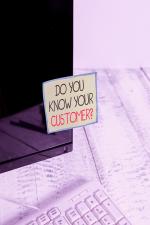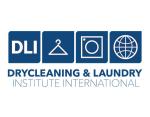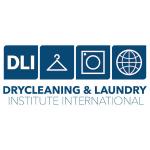LOS ANGELES — Dry cleaners, like other owners of small- to mid-sized businesses, should take advantage of every opportunity to not only publicize their companies but also humanize their brand and stay at the top of their customer’s mind when the need for their services arise.
One of the best tools available for this, and one that is available to every dry cleaner, is social media.
Patty Ross, a social media expert, brand manager and business marketing advisor at Golden State Marketing in Los Angeles, offered this advice during her presentation, “Social Media Marketing Strategies for Your Small Business,” a webinar recently hosted by the Service Corps of Retired Executives (SCORE).
“There’s a quote I love from (marketing expert) Seth Godin,” Ross says. “’Build it and they will come’ only works in the movies. Social media is ‘build it, nurture it, engage them and they may come and stay.’”
Poetry in Marketing
Ross started her presentation by highlighting where social media fits in the marketing sphere.
“When we're talking about marketing, we look at it in what's called POEM: the paid, earned and owned media,” Ross says, adding that social media can fall under all these categories.
Ross broke down the POEM categories as:
Paid Media
- Social media advertising
- Pay-per-click (PPC) advertising
- Influencer marketing
- Banner advertisement
Owned Media
- Website copy
- Product pages
- Blog content
- Social media content
- Email newsletters
Earned Media
- Mentions in third-part review sites
- Organic media coverage
- Social media shoutouts
- High spots in search engine results
“When people ask me ‘What's my business POEM?’” Ross says, “I always say we need to look at your business holistically. For some, it makes sense to do public relations or search engine optimization and Google ads. Others spend more of their time on social media, creating content. For others, it’s the old-fashioned call — the ‘feet on the street,’ or digital feet — building relationships.”
Social Media in the Mix
“Before you go on to social media, make sure you have your ideal audience locked in,” Ross says, “because if you don't, and you try to market to everybody, you're going to wind up marketing to nobody.”
Part of this is understanding your customers and marketing to them where they prefer to be.
“You might think, ‘Oh, my audience is on TikTok,’ and really they're not,” Ross says. “Maybe they're on LinkedIn. This is an important part of your marketing plan, because nothing else will be right if you don't know who your customers are.”
“Research the SWOT analysis,” she says. “What you're good at, what you're bad at, what opportunities are out there and what are your competitors doing? What is your unique selling proposition out there in the space? Are you speaking to the ideal clients with your story, your branding and your messaging? You should know that before you start doing your branding and messaging.”
Can’t-Ignore Media
Ross then listed nine reasons why small-business owners shouldn’t ignore social media
It increases brand awareness — “That's what social media's function is,” Ross says. “We go to Google when we're searching for something immediate intent. I don't I don't go to Facebook when my air conditioning is down and I’m looking for an HVAC person. Social media is about building that brand awareness.”
It humanizes your brand — “It's telling your story, who you are,” Ross says. “Why did you start this business? What makes you tick? Why should I be loyal? So, share your story and not just say, ‘Here's my product, here's my product, here's my product, bye.’ Bring them into your story.”
It helps to stay at top of mind — “The more you're out there, the more you can stay top of mind by posting and engaging,” Ross says. “You can't hide in the corner and have people say, ‘Oh, there they are in the corner.’ Let's go talk to them. You’ve got to come out of the corner and mix and mingle, both online and offline.”
It increases website traffic — “Again, you're building that brand awareness,” Ross says. “It won't be immediate, where I'm going to put a link to my site and all these calls are going to come in, but it definitely can, over time. As you're out there more, you’ll get more people to come to your website.”
It serves as a platform to partner with influencers — “There are social media influencers as a whole job category now,” Ross says, “but there are people out there who are willing to share your story as well because they're fans — they are your clients.”
It builds reputation and goodwill — “It helps you be out in the community and be a part of it,” Ross says. “Talk about what's going on around you.”
It helps to handle a crisis — “Hopefully this doesn’t happen to you very often,” Ross says, “but you can use it to spin a situation and get your views and explanations out.”
It offers more meaningful insights about your customers — “You have to look under the hood and see who's coming and who's engaged,” Ross says. “(Social media platforms) usually have stats. Facebook Insights will give you demographics. Your website analytics can give you demographics of where people are from. What are they? What are they interested in talking about?”
It helps to keep an eye on the competition — “When you're doing competitor research,” Ross says, “one of the places you can look is at their social media. Are they posting on a regular basis? What are they posting? Are people interacting with it? Look at the content, more than the number of followers. Your followers want to see content. That's why they followed you.”
Since social media is available to any business, Ross believes it pays to take advantage of this avenue of communication with customers.
“You just can't ignore social media in this day and age,” she says. “I do get asked, ‘Do I really need to be on social media for my business?’ Yes, you do, for the most part. It just depends on where, and that varies for different businesses.”
Come back Thursday for Part 2 of this series, where we’ll look at common social media marketing mistakes.
Have a question or comment? E-mail our editor Dave Davis at [email protected].




























































































